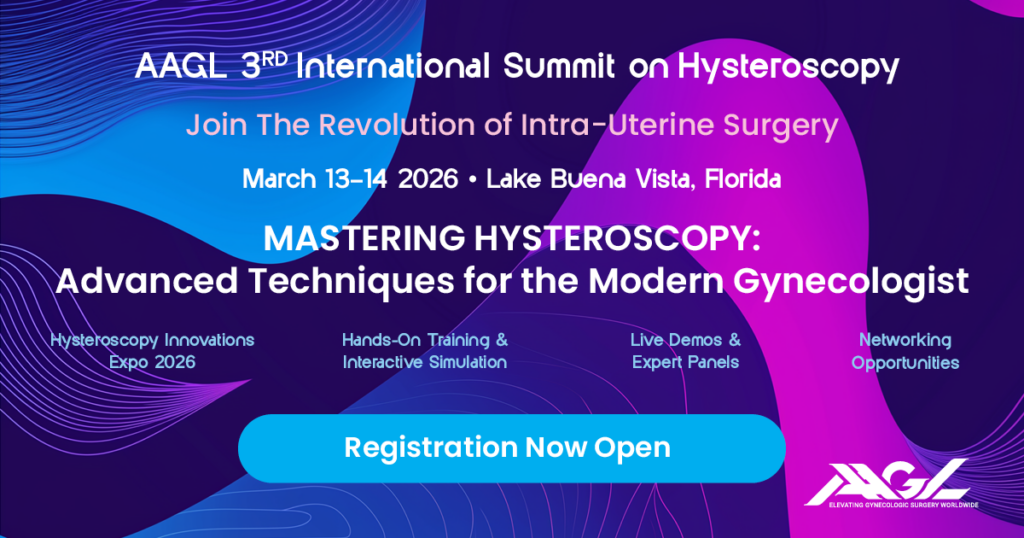SurgeryU: Blasts from the Past
I hope everyone is enjoying all of the new content on SurgeryU. The SurgeryU Editorial Board is working hard on providing our members with cutting edge and educational content that is both relevant to their practice and thought provoking. We have quite a bit of content from the 2018 Annual Congress that we will be publishing in the upcoming weeks as well as content from recent international meetings.
That being said, I want to take a moment to reminisce about the early years of SurgeryU. I was a fellow from 2003-2004 and still remember operating with small CRT monitors and having to defend doing hysterectomies laparoscopically instead of through large open incisions. Minimally invasive surgery (MIS) was still in its early years and patients were not savvy in searching out providers who could perform their surgeries laparoscopically. The volume of surgery was lower than what it is now, so I often had to use other resources to augment my education. I was introduced to SurgeryU as a fellow and spent countless hours poring over the archives watching the videos of such stalwarts as Harry Reich, CY Liu, and others. I was amazed at what they were able to accomplish through tiny little incisions, and to this day still use many of their techniques in my OR. Procedures we now consider routine were groundbreaking back then and fed my inner curiosity as to the limits of MIS.
Maya Angelou once said, “If you don’t know where you’ve come from, you don’t know where you are going.” I often find it disheartening that many new fellows and residents don’t know when the first laparoscopic hysterectomy was performed or understand the evolution of technology that we now take for granted. They all trained in an era where surgery is performed on 50-inch flat panel monitors and surgeons have 7-8 different vessel sealers to choose from. The AAGL Board and I felt that it was part of SurgeryU’s mission to highlight our past and document it for future generations of surgeons. We have a vast archive of content stretching back 25 years that chronicles the evolution of MIS and shows us where we have “come from”. This content may seem dated, but upon closer inspection it is still highly educational and relevant.
In order to make this content available to our members, SurgeryU developed the Historical Archives Library. This library is accessible from the SurgeryU homepage and contains a specially curated selection of historical videos. To help with selecting videos for the archive and organizing the collection, the AAGL and SurgeryU Board felt that a special Guest Editor should be chosen for the task. Given his illustrious career and dedication to AAGL, Dr. Alan Johns was selected and graciously accepted the position. Dr. Johns was the AAGL President in 2003 and his unique perspective of the past and future of MIS has been invaluable in developing the Historical Archives. He has watched hundreds of videos and selected the best ones for our members’ viewing pleasure. We owe Dr. Johns a debt of gratitude and appreciate the countless hours he has spent (and will spend) on this project.
As we continue to develop the Historical Archives, I invite all of our members to browse SurgeryU and take a walk down memory lane. We are constantly adding videos and still have quite a bit of “old” content to upload. I am sure you will find the experience not only enjoyable but also enlightening. Please feel free to reach out to me with any suggestions and I am excited for a bright 2019. Let’s explore our beginnings and look ahead to an amazing future!
Laparoscopic Hysterectomy, LSO, Electrosurgical Culdotomy, Cuff Suspension (Multiple Fibroids), by Harry Reich, MD
Our first featured video is by someone who needs very little introduction. Dr. Harry Reich performed the world’s first total laparoscopic hysterectomy and has been a pioneer in the field and a mentor to many. This case is a TLH/LSO for a fibroid uterus. I would like to point out three features of this case that may be of interest to our viewers:
- The use of free ties to secure vascular pedicles. In this era of reliable vessel sealers, most surgeons secure vascular pedicles with some form of electrosurgery. Dr. Reich’s technique still has a place in the surgeon’s armamentarium though. I routinely secure vascular pedicles with free ties in cases where the pedicle/vessels are quite enlarged (ie. large fibroid uteri or removal of adnexal masses in pregnancy) or if the ureter is in close proximity to the vessels and I am concerned about thermal spread.
- Reliance on sharp dissection. This video highlight’s Dr. Reich’s excellent technique for sharp dissection. As can be seen, his keen eyes are able to discern surgical planes and dissect tissue with minimal bleeding.
- Control of the uterine arteries laterally within the parametria. This technique can be very helpful when performing a hysterectomy and access to the uterine vasculature is compromised (ie. large fibroids or severe anatomic distortion from endometriosis). It also allows for control of the uterine artery lateral to the ureters’ course within the parametria.








